Search titles
Displaying results 41 to 50 of 131.

Modern Japanese Online »
The first course to mastering modern Japanese
Authored by: Naomi Ogi, Duck-Young Lee
Publication date: July 2016
Modern Japanese Online is designed to provide beginning learners of the Japanese language with a solid base of the major grammar and expressions of Japanese in a flexible electronic mode. With detailed explanations and practical exercises, successful learners will gain quality knowledge of the system of the Japanese language, as well as exceptional skills to deal with a variety of verbal expressions necessary for daily conversations.
The learning objectives have been designed and organised on a step-by-step basis. With detailed explanations and rich exercises, Modern Japanese Online aims at ‘easy to use and easy to learn’.
Modern Japanese Online is based on the Grammar and Expressions sections in 日本語がいっぱい 'Nihongo ga Ippai' (published in 2010, by Hituzi Shobo, Tokyo), which is aimed at developing communication skills in terms of Grammar, Expressions, Natural Conversation Notes, Creative Dialogues, and Cultural Notes. Since Modern Japanese Online mainly focuses on the Grammar and Expressions, it is recommended that learners use this eText in conjunction with日本語がいっぱい for comprehensive study of Japanese.
The combined use of Modern Japanese Online and日本語がいっぱい 'Nihongo ga Ippai' aims to cover most grammar items and expressions up to the Level N4 of the Japanese Language Proficiency Test.
Note: Due to the large file size, this ebook might take a little while to open in your ebook reader.
This textbook is used as course material in:
Japanese 1: Spoken JPNS1012 and JPNS6112
Japanese 1: Written JPNS1014 and JPNS6114
Japanese 2: Spoken JPNS2003 and JPNS6113
Japanese 2: Written JPNS2005 and JPNS6115
Download for free
Not available for purchase
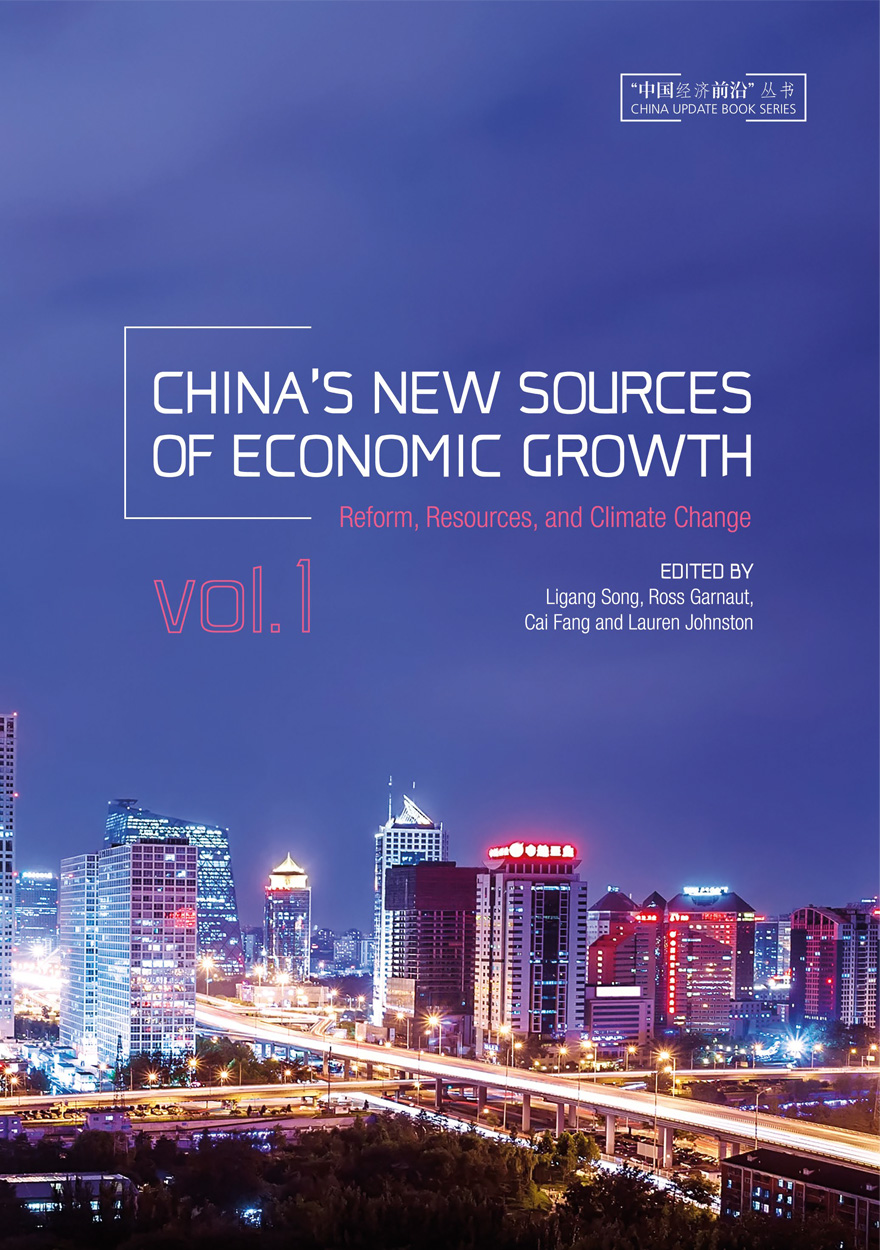
China's New Sources of Economic Growth: Vol. 1 »
Reform, Resources and Climate Change
Edited by: Ligang Song, Ross Garnaut, Cai Fang, Lauren Johnston
Publication date: July 2016
China’s change to a new model of growth, now called the ‘new normal’, was always going to be hard. Events over the past year show how hard it is. The attempts to moderate the extremes of high investment and low consumption, the correction of overcapacity in the heavy industries that were the mainstays of the old model of growth, the hauling in of the immense debt hangover from the fiscal and monetary expansion that pulled China out of the Great Crash of 2008 would all have been hard at any time. They are harder when changes in economic policy and structure coincide with stagnation in global trade and rising protectionist sentiment in developed countries, extraordinarily rapid demographic change and recognition of the urgency of easing the environmental damage from the old model. China’s economy has slowed and there are worries that the authorities will not be able to contain the slowdown within preferred limits. This year’s Update explores the challenge of the slowdown in growth and the change in economic structure. Leading experts on China’s economy and environment review change within China’s new model of growth, and its interaction with ageing, environmental pressure, new patterns of urbanisation, and debt problems at different levels of government. It illuminates some new developments in China’s economy, including the transformational potential of internet banking, and the dynamics of financial market instability. China’s economic development since 1978 is full of exciting change, and this year’s China Update is again the way to know it as it is happening
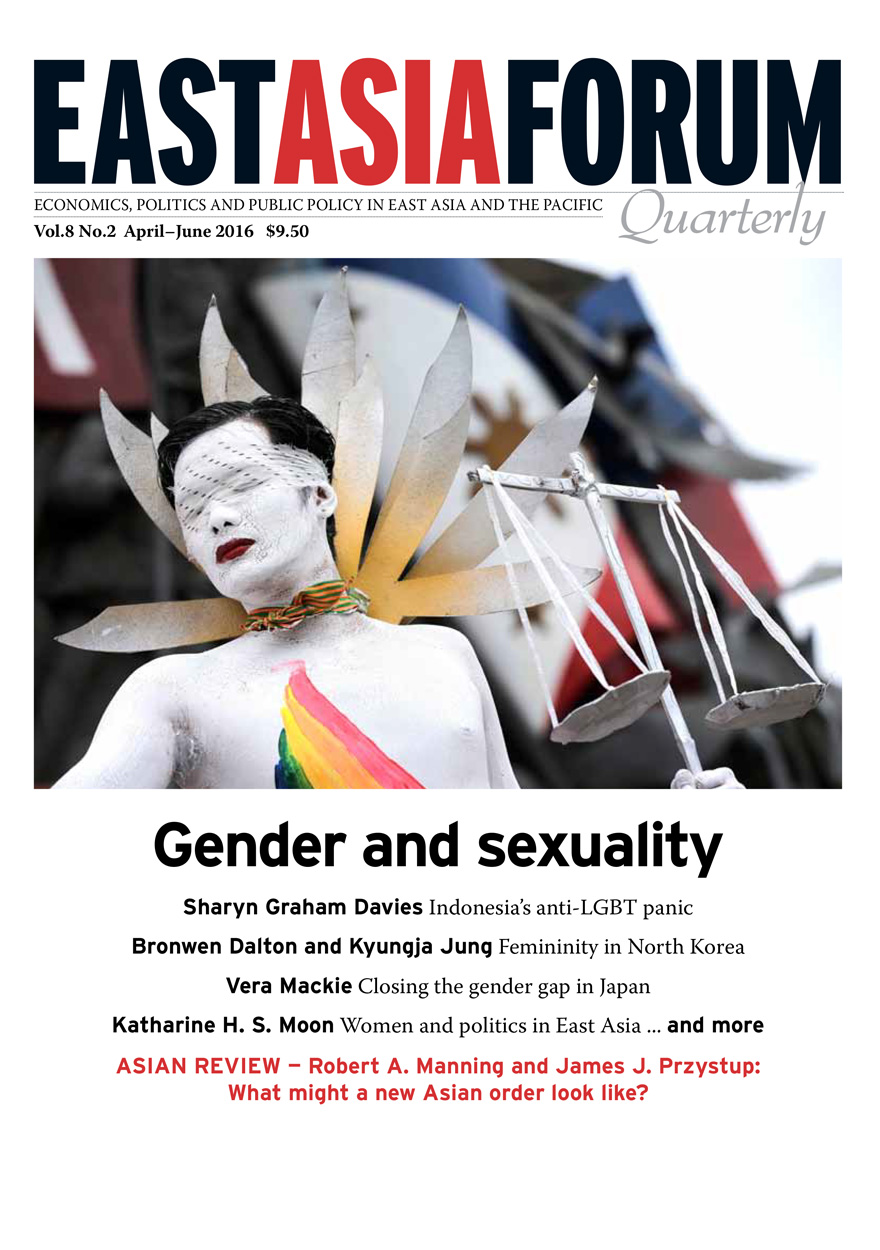
East Asia Forum Quarterly: Volume 8, Number 2, 2016 »
Publication date: June 2016
East Asia Forum Quarterly grew out of East Asia Forum (EAF) online, which has developed a reputation for providing a platform for the best in Asian analysis, research and policy comment on the Asia Pacific region in world affairs. EAFQ aims to provide a further window onto research in the leading research institutes in Asia and to provide expert comment on current developments within the region. The East Asia Forum Quarterly, like East Asia Forum online, is an initiative of the East Asia Forum (EAF) and its host organisation, the East Asian Bureau of Economic Research (EABER) in the Crawford School of Economics and Government in the College of Asia & the Pacific at The Australian National University.
Download for free
Not available for purchase
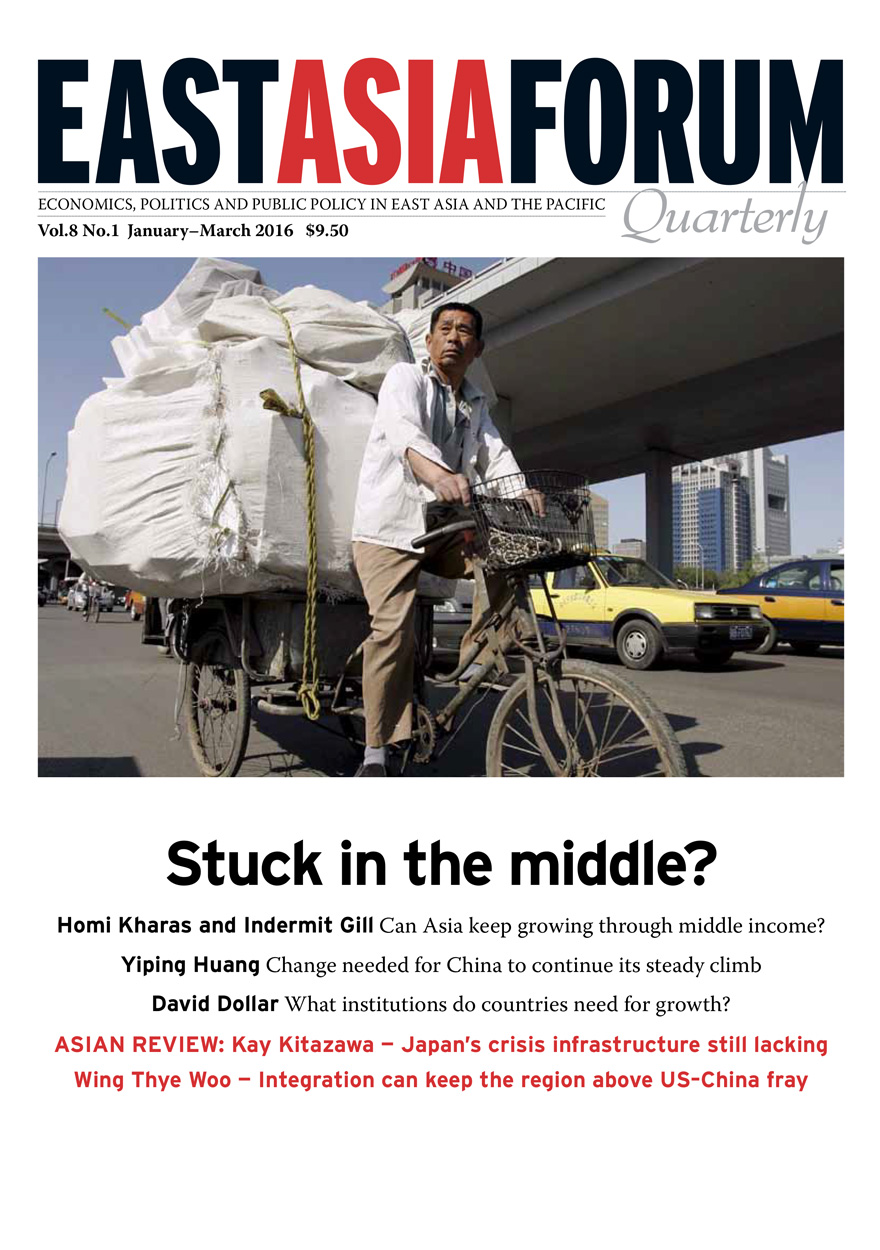
East Asia Forum Quarterly: Volume 8, Number 1, 2016 »
Publication date: March 2016
East Asia Forum Quarterly grew out of East Asia Forum (EAF) online, which has developed a reputation for providing a platform for the best in Asian analysis, research and policy comment on the Asia Pacific region in world affairs. EAFQ aims to provide a further window onto research in the leading research institutes in Asia and to provide expert comment on current developments within the region. The East Asia Forum Quarterly, like East Asia Forum online, is an initiative of the East Asia Forum (EAF) and its host organisation, the East Asian Bureau of Economic Research (EABER) in the Crawford School of Economics and Government in the College of Asia & the Pacific at The Australian National University.
Download for free
Not available for purchase

China & ANU »
Diplomats, adventurers, scholars
Authored by: William Sima
Publication date: December 2015
The Pacific War and its aftermath radically transformed Australian perceptions of what was then called the ‘Near North’. Many recognised that in the postwar world Australia’s strategic interests and economic fortunes called for a new understanding of Asia and the Pacific. China loomed large in these calculations.
Based on extensive research and featuring rare archival documents and photographs, China & ANU introduces the diplomats, adventurers and scholars who contributed to Australia’s engagement with China, the ‘Chinese Commonwealth’ and our region from the 1940s-1950s. In particular, this book focusses on the interconnection between Australia’s first diplomat-scholars in China and the founding of Chinese Studies at the newly established Australian National University.
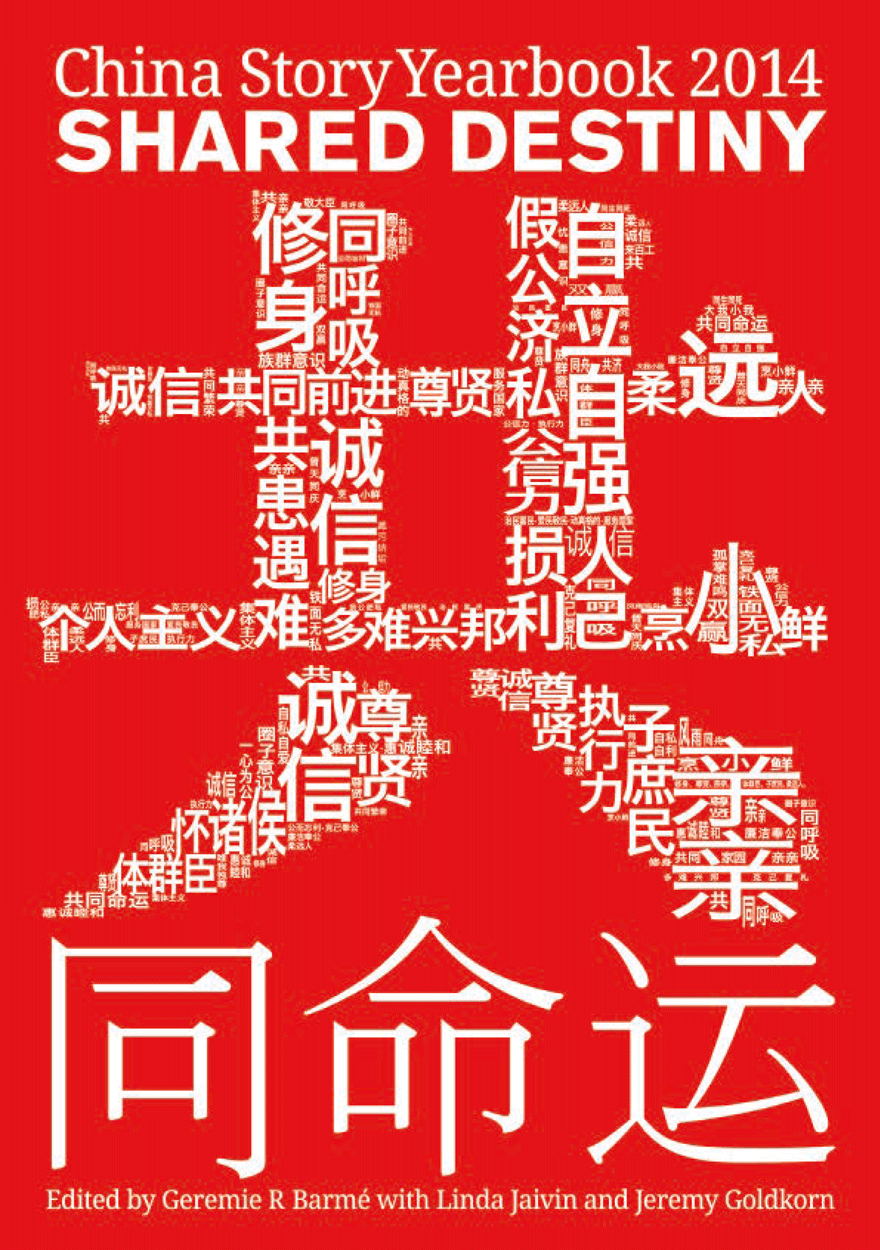
Shared Destiny »
Publication date: November 2015
Humanity as never before shares a common destiny, whether it be in terms of the resources of the planet, the global environment, economic integration, or the movement of peoples, ideas, cultures. For better or worse humankind is a Community of Shared Destiny 命运共同体.
The People’s Republic of China under the leadership of the Chinese Communist Party and its ‘Chairman of Everything’, Xi Jinping, has declared that it shares in the destiny of the countries of the Asia and Pacific region, as well as of nations that are part of an intertwined national self-interest. The Party, according to Marxist-Leninist-Maoist theory, is the vanguard of progressive social forces; it cleaves to the concept of shared destiny and its historical role in shaping that destiny. Since its early days nearly a century ago it has emphasised the collective over the individual, the end rather than the means. It addresses majority opinion while guiding and moulding the agenda both for today, and for the future.
Chapter notes are available to view online.
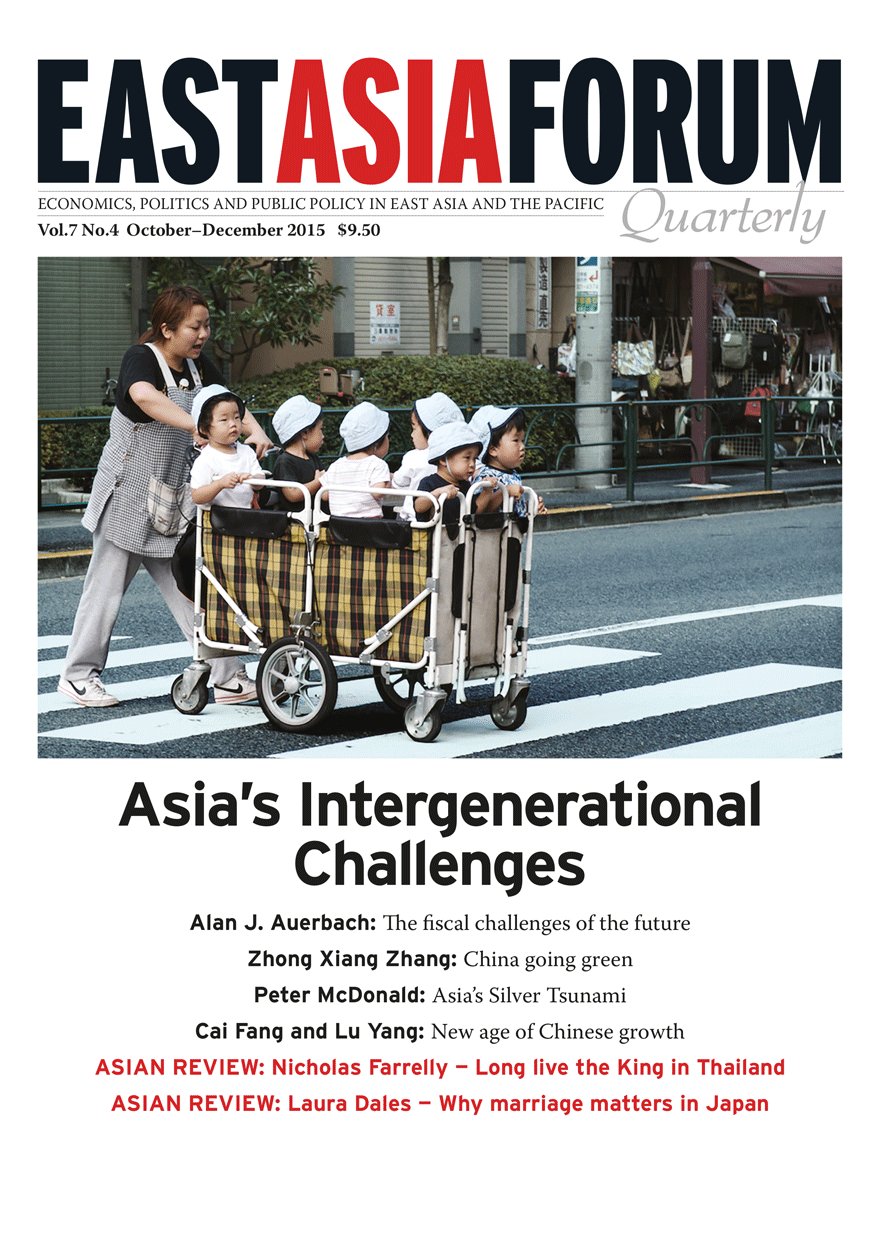
East Asia Forum Quarterly: Volume 7, Number 4, 2015 »
Publication date: November 2015
East Asia Forum Quarterly grew out of East Asia Forum (EAF) online, which has developed a reputation for providing a platform for the best in Asian analysis, research and policy comment on the Asia Pacific region in world affairs. EAFQ aims to provide a further window onto research in the leading research institutes in Asia and to provide expert comment on current developments within the region. The East Asia Forum Quarterly, like East Asia Forum online, is an initiative of the East Asia Forum (EAF) and its host organisation, the East Asian Bureau of Economic Research (EABER) in the Crawford School of Economics and Government in the College of Asia & the Pacific at The Australian National University.
Download for free
Not available for purchase

The Social Sciences in the Asian Century »
Publication date: September 2015
In this collection of essays, we reflect on what it means to practise the social sciences in the twenty-first century. The book brings together leading social scientists from the Asia-Pacific region. We argue for the benefit of dialogue between the diverse theories and methods of social sciences in the region, the role of the social sciences in addressing real-world problems, the need to transcend national boundaries in addressing regional problems, and the challenges for an increasingly globalised higher education sector in the twenty-first century. The chapters are a combination of theoretical reflections and locally focused case studies of processes that are embedded in global dynamics and the changing geopolitics of knowledge. In an increasingly connected world, these reflections will be of global relevance.

Deepening Reform for China's Long-term Growth and Development (Chinese version) »
深化改革与中国经济长期发展
Authored by: 宋立刚 [澳〕(Ross Garnaut)蔡昉/主编
Publication date: September 2015
本书分为五个部分,共21篇文章。第一部分讨论了决 定经济增长速度的巨大力量。这些基本力量的相互作用, 决定着中国是否能够继续向前发展,并最终跨入发达经济 体行列。第二部分讨论了中国国内和全球正在盛行的环境 保护优先观念如何对经济发展某些方面产生重要影响。本 书的第三部分详细论述了金融领域的改革。它是贯彻经济 增长新模式的必备条件,具有效果直接、情况复杂、风险 较大的特点。在论述了金融领域改革后,本书第四部分重 点关注了要素市场,即土地市场、劳动力市场和外国直接 投资的作用。本书的第五部分共五篇文章,对决定生产力 增长的重要因素进行了考察。
Chinese print version of this book is available from Social Science and Academic Press

East Asia Forum Quarterly: Volume 7, Number 3, 2015 »
Publication date: September 2015
East Asia Forum Quarterly grew out of East Asia Forum (EAF) online, which has developed a reputation for providing a platform for the best in Asian analysis, research and policy comment on the Asia Pacific region in world affairs. EAFQ aims to provide a further window onto research in the leading research institutes in Asia and to provide expert comment on current developments within the region. The East Asia Forum Quarterly, like East Asia Forum online, is an initiative of the East Asia Forum (EAF) and its host organisation, the East Asian Bureau of Economic Research (EABER) in the Crawford School of Economics and Government in the College of Asia & the Pacific at The Australian National University.
Download for free
Not available for purchase



